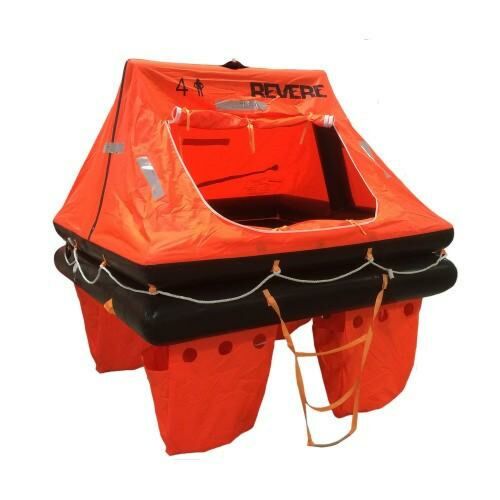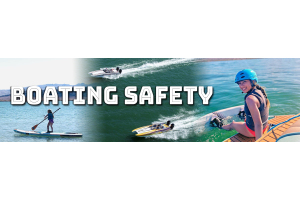Choosing the Best Life Raft for your Boat
Life rafts are designed to provide shelter for crew members endangered from a capsized, burning or sinking boat. It can be the most important piece of safety equipment on your boat when you have the right raft for your needs. Some things to consider when selecting a raft is determining what type of cruising you are taking part in. Are you cruising offshore, sailing off on a voyage around the states, fishing a tournament offshore? If you said "yes" to any of those options then you are a candidate for needing protection offered from a liferaft.
Why Do You Need a Life Raft?
- To be prepared for worse-case situations. Create a standard operating procedures checklist and review with your crew so everyone is on the same page and is aware of safety items you have on the vessel. Last ditch effort would be gathering all crewmembers and launching your raft.
- A failed electrical system caused an onboard fire. You will need to get off the boat as quickly as possible.
- If it's too far to swim to shore and the water is colder than 32 degrees, it's time for a raft.
- You are farther than hours from any help.
Different Types of Rafts
Compact Rafts (Coastal): This is perfect for inland use of 6 people or less. This is smallest and most inexpensive option if you are new to rafts and want a safe option for your family when cruising inshore, including locations up to 15 miles from shore. These rafts do not include a safety kit of items and excludes a canopy or cover from the enviroment but will do in a pinch. The compact size is perfect for easy stow away and deployment. If the time comes to use the raft, deployment is easy, give a hard pull on the painterline and the raft will inflate within 30 seconds.

Shop Coastal Rafts Here
Offshore Rafts: A typical offshore raft is considerably more expensive than a coastal raft and is designed to protect crew members in rough, stormy, cold weather for more than 24 hours. These rafts fit up to 12 people and extend survival time to four or five days using supported canopies, insulated flooring and double buoyancy tubes. Offhsore rafts come packaged with a survival kit that carries an array of items from hand flares, repair and first aid kits, paddles, a flashlight, drinking water and other accessories to help you survive days offshore.
Shop Offshore Life Rafts Here
ISO Life Rafts: Type 1 ISO rafts are appropriate for extreme offshore conditions like high seas and heavy winds featuring double tubes, two entrances and an inflatable ladder. These rafts will contain an equipment pack designed to help you survive for more than 24 hours.
Type 2 ISO rafts are more appropriate for instore and coastal waters where moderate conditions may be met. These rafts contain an equipment pack with minimal gear and rations, intended for use where a 24 hour or less rescue is likely.
Shop ISO Rafts Here
Storage Options: Rafts come in either a soft, flexible valise pack for below deck storage or a durable fiberglass canister. If you plan to store your raft on deck, you will need a canister packed raft. Canisters are made for permanent mounting on a cradle and are manually released by pulling a pin on a shackle. It's recommended to use a hydrostatic release which will release your raft from the cradle and allow it to float to the surface if you cannot get to it before the boat sinks. The valise may be secured on deck for trips but won't last in the long run when stored that way.
It's important to carefully choose the most accessible location on your boat for raft storage. A life raft is no use if you cannot get to it if ever needed. Make sure you account for crew members height and weight when choosing a mounting location. All members should be briefed on the rafts location prior to leaving for a trip.


Coast Guard Requirements: Recreational boaters are not required by the Coast Guard to carry an approved life raft. Certain commercial vessels are required to carry an approved raft. Inspected vessels receive an inspection certificate which specifies what they must carry. Requirements for uninspected vessels vary.
On Board Supplies: The pre-packaged gear that comes with offshore rafts is really intended for short term use and is geared toward maintaining your raft and not you and your crew. You should always have an abandon ship bag (more commonly known as ditch bag) on board filled with safety items to ensure your chance of survival. The ditch bag should have at minimum, the following items.
2. A waterproof handheld VHF.
3. First Aid Kit
4. Signaling Devices (Flares, Signal Mirror, Strobes)
5. Packaged Water and Food Bars.
Shop Safety Kits here.











